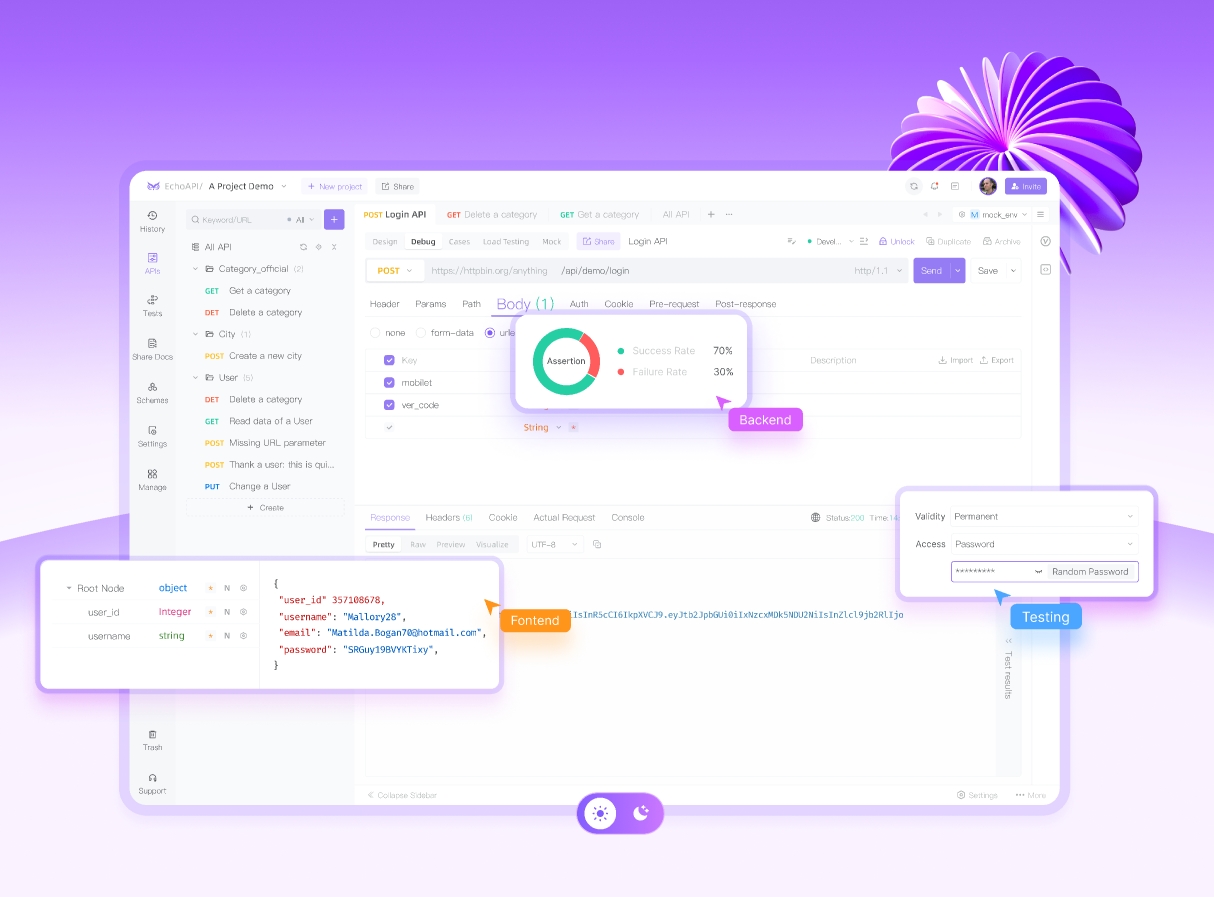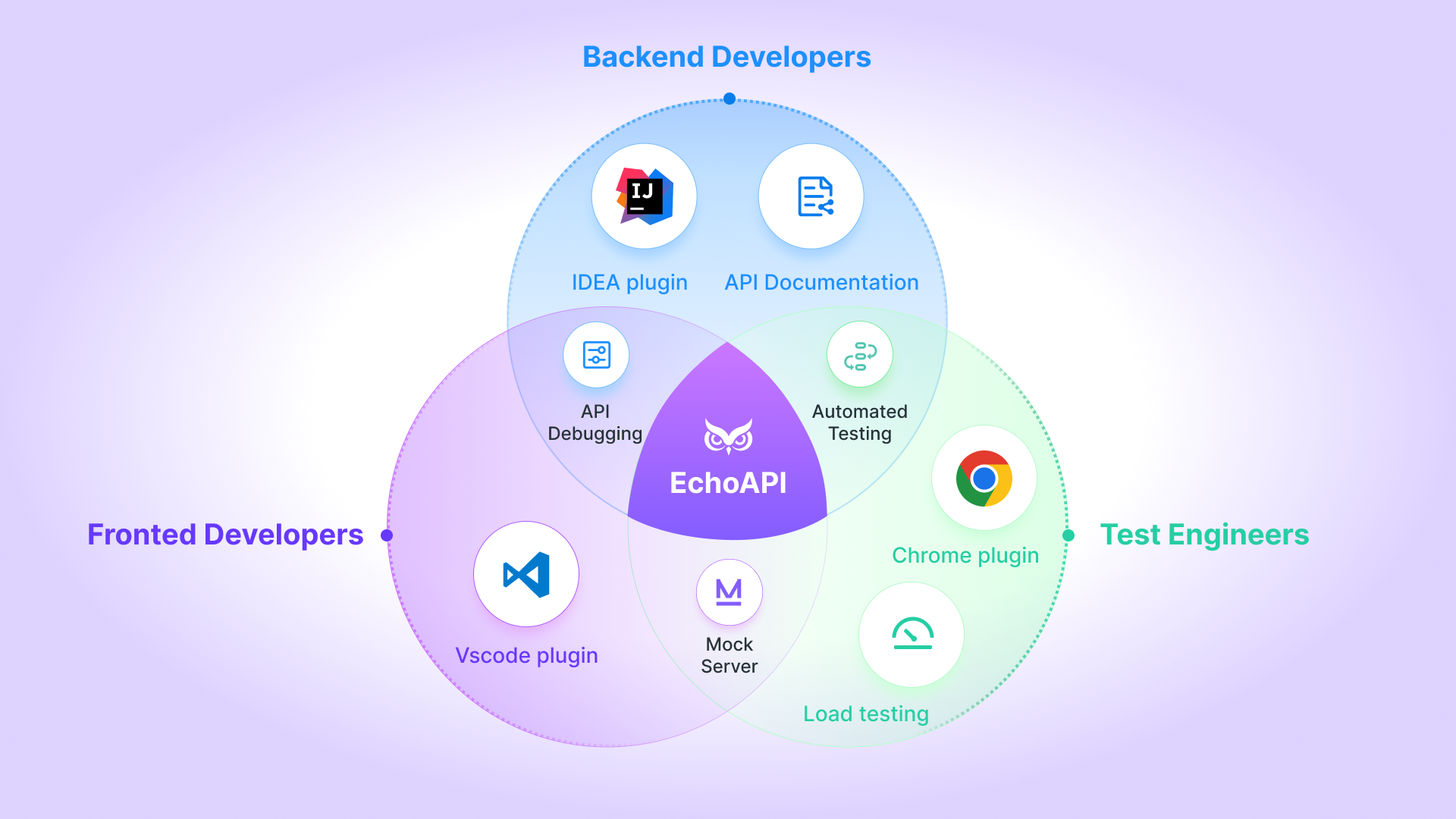Writing High-Performance APIs in Go
Go, a compiled language by Google, excels in high-performance API development with its simplicity, efficiency, and concurrency. This article highlights Go's advantages, demonstrates an API example using Gin, and shows how EchoAPI streamlines debugging and testing.
Go, also known as Golang, is a statically typed, compiled programming language designed by Google. It was created to handle the demands of scalable, high-performance applications, making it an excellent choice for API development. In this article, we'll introduce Go, highlight its advantages over other popular languages, provide a practical example of writing a high-quality API, discuss how to use EchoAPI for debugging, and conclude with key takeaways.
Introducing Go

Go is renowned for its simplicity and performance. With a syntax reminiscent of C, but with modern features and efficiency akin to Python and Ruby, Go has rapidly gained popularity in the software development community. This combination of simplicity and power allows developers to produce clean and efficient code.
Go boasts several key features:
- Concurrency: Go's concurrency model, powered by goroutines, makes it easy to build applications that efficiently utilize multicore processors.
- Standard Library: A robust standard library provides a comprehensive set of tools for a wide range of tasks, from web development to cryptography.
- Compilation Speed: Go is known for its fast compilation times, enabling quick iterations during development.
Advantages of Go Over Other Languages

When it comes to API development, Go has several advantages over more established languages like Java, Python, and Node.js:
- Performance: Go's performance is often comparable to that of low-level languages like C/C++. This makes it suitable for high-performance applications needing rapid response times.
- Simplicity and Readability: Go's syntax is straightforward, making it easier to read and maintain. Moreover, Go’s strict typing enhances code security and prevents many bugs.
- Efficient Concurrency: Go’s native support for concurrency using goroutines and channels provides a simple and effective way to handle multiple tasks simultaneously without significant overhead.
- Scalability: Go's lightweight goroutines and efficient garbage collection mechanism enable the creation of highly scalable applications.
Practical Example: Writing a High-Quality API in Go

To demonstrate the creation of a high-performance API in Go, let's start by building a simple RESTful API using the popular framework, Gin.
First, install Gin:
go get -u github.com/gin-gonic/gin
Now, let's create a basic API:
package main
import (
"github.com/gin-gonic/gin"
"net/http"
)
func main() {
router := gin.Default()
// Define a GET endpoint
router.GET("/ping", func(c *gin.Context) {
c.JSON(http.StatusOK, gin.H{
"message": "pong",
})
})
// Additional API routes can be added here
router.Run(":8080") // Start the server on port 8080
}
Debugging and Testing with EchoAPI
Once you have your API up and running, the next step is to ensure it functions as expected. This is where EchoAPI can prove invaluable.

To integrate EchoAPI with your Go API, follow these steps:
- Import the EchoAPI client into your Go application.
- Set up your test and mock environments using the EchoAPI dashboard.

Key Features of EchoAPI:
- No Need for Consistent Login: EchoAPI's plugins and tools are designed to provide a seamless experience without the constant need for logging in. This reduces the hassle and makes it easier to switch between tasks without interruptions.
- Automated Testing: Configure automated tests to ensure your endpoints behave as expected with any change.
- Load Testing: Simulate heavy loads to see how your API performs under stress.
- API Documentation: Generate API documentation with a single click, ensuring your API is well-documented and easy to use for other developers.
- EchoAPI for IntelliJ IDEA: This plugin allows Java developers to generate, modify, and debug interfaces directly from their code. It supports creating API documents and syncing with EchoAPI.
- EchoAPI for VS Code: This plugin enables API debugging and testing within the VS Code environment. It supports adding, modifying, and testing APIs, complete with pre and post-scripts, visual assertions, and correlation extractions.
- EchoAPI Interceptor: This Chrome extension captures web requests, allowing you to modify parameters and debug directly from any web page. It can sync captured requests with EchoAPI for further testing.

Conclusion
Go's unique blend of simplicity, performance, and concurrency makes it an excellent choice for developing high-performance APIs. By leveraging tools like EchoAPI for debugging, testing, and documentation, you can enhance your development workflow and ensure your API is robust and reliable.
In summary:
- Go offers unparalleled performance and simplicity.
- Concurrency in Go makes it ideal for scalable API development.
- EchoAPI simplifies the testing and documentation process, ensuring your API is ready for production.
By following these practices, you'll be well-equipped to write and maintain high-performance APIs in Go, leading to faster development cycles and more efficient execution. Happy coding!




 EchoAPI for VS Code
EchoAPI for VS Code

 EchoAPI for IntelliJ IDEA
EchoAPI for IntelliJ IDEA

 EchoAPl-Interceptor
EchoAPl-Interceptor

 EchoAPl CLI
EchoAPl CLI
 EchoAPI Client
EchoAPI Client API Design
API Design
 API Debug
API Debug
 API Documentation
API Documentation
 Mock Server
Mock Server








